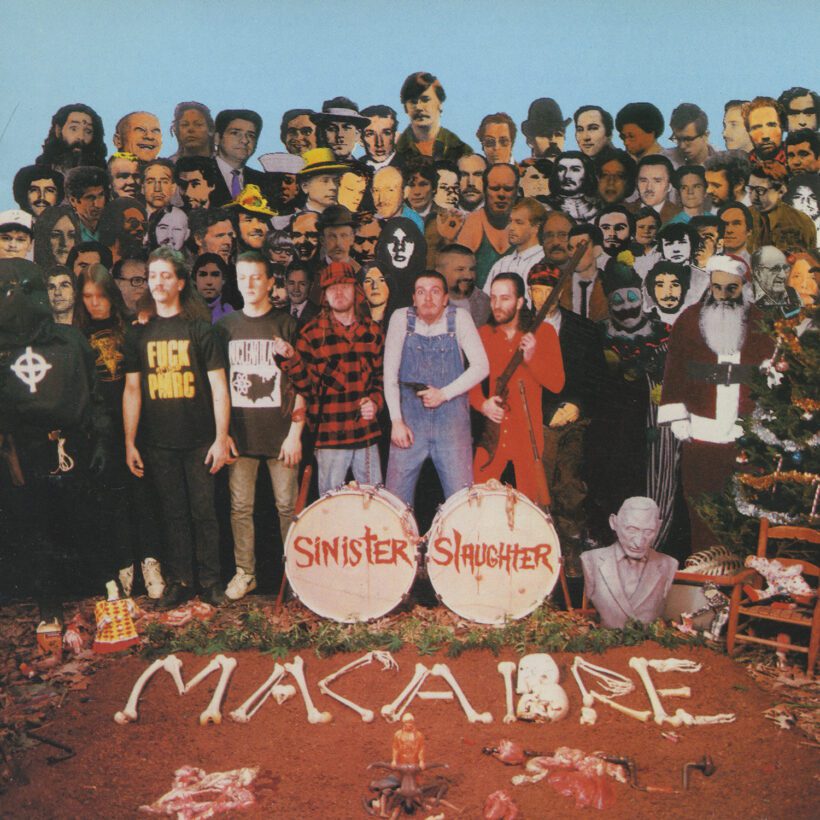
Murder, They Wrote
The Making of Macabre’s Sinister Slaughter
There is no other band like Macabre. The Downers Grove, IL act’s relentless double-bass drums, unusually high-pitched vocals and folk-/nursery rhyme-influenced melodies gave birth to a self-branded subgenre called “murder metal” in 1985 via a lineup of guitarist/vocalist Lance “Corporate Death” Lencioni, bassist/vocalist Charles “Nefarious” Lescewicz and drummer Dennis “the Menace” Ritchie (which remains unchanged from day one).
Macabre are a reflection of the Midwest and its melting pot of metal. To an outsider, the band is simply from Chicago, but for locals, the “greater Chicagoland area” encompasses not only the varied neighborhoods of Chicago proper, but the surrounding suburbs. The area has its fair share of massive bands—Smashing Pumpkins, Rise Against, Fall Out Boy—but Disturbed notwithstanding, the place’s biggest metal export is… Master? Trouble? Broken Hope? When it comes to metal, it’s the place of “not quite making it.”
Because of—or possibly despite—Macabre’s double-whammy of nebulous location and love-it-or-hate-it approach, the band was quickly able to reach cult status after self-releasing 1,000 copies of 1987 debut 12-inch Grim Reality on their own “label,” Decomposed Records. This caught the attention of the U.K.’s Vinyl Solution, which reissued Grim Reality with two additional songs, as well as Macabre’s 1989 debut LP, Gloom. Five songs from a self-released demo, Shit List, were pressed onto vinyl by Germany’s Gore Records in 1990, which was followed by almost three years of silence.
Macabre’s next sign of life came in 1992 with an appearance on the legendary Son of Bllleeeeaaauuurrrrgghhh! compilation on Slap-a-Ham Records (“52 Bands! 69 Songs!”), to which Macabre contributed an early, 12-second version of “Zodiac.” Demo versions of four more Sinister Slaughter songs appeared on the Relapse Records Underground Series Nightstalker 7-inch in 1993, preceding the album’s release on Nuclear Blast later that same year.
Ultimately, Sinister Slaughter sticks out like a sore thumb from its 1993 Nuclear Blast classmates. Gorefest’s reissued Mindloss, Dismember’s Indecent & Obscene, and Benediction’s Transcend the Rubicon all lean heavily into the ’90s death metal sound. A 1993 review of Sinister Slaughter from The Fifth Path zine dubs the band “educational speedcore,” and an Ax/ction Records ad from Maximum Rocknroll describes their sound as “all-out murder blurr/vicious.” Sinister Slaughter is, without question, one of a kind. From its hyper-detailed Beatles-parody cover art to its blistering speed and biting dark humor, Sinister Slaughter’s legendary, singular vision is a welcome addition to our Hall of Fame. —Dave Hofer
Need more classic Macabre? To read the entire seven-page story, featuring interviews with the members who performed on Sinister Slaughter, purchase the print issue from our store, or digitally via our app for iPhone/iPad or Android.




